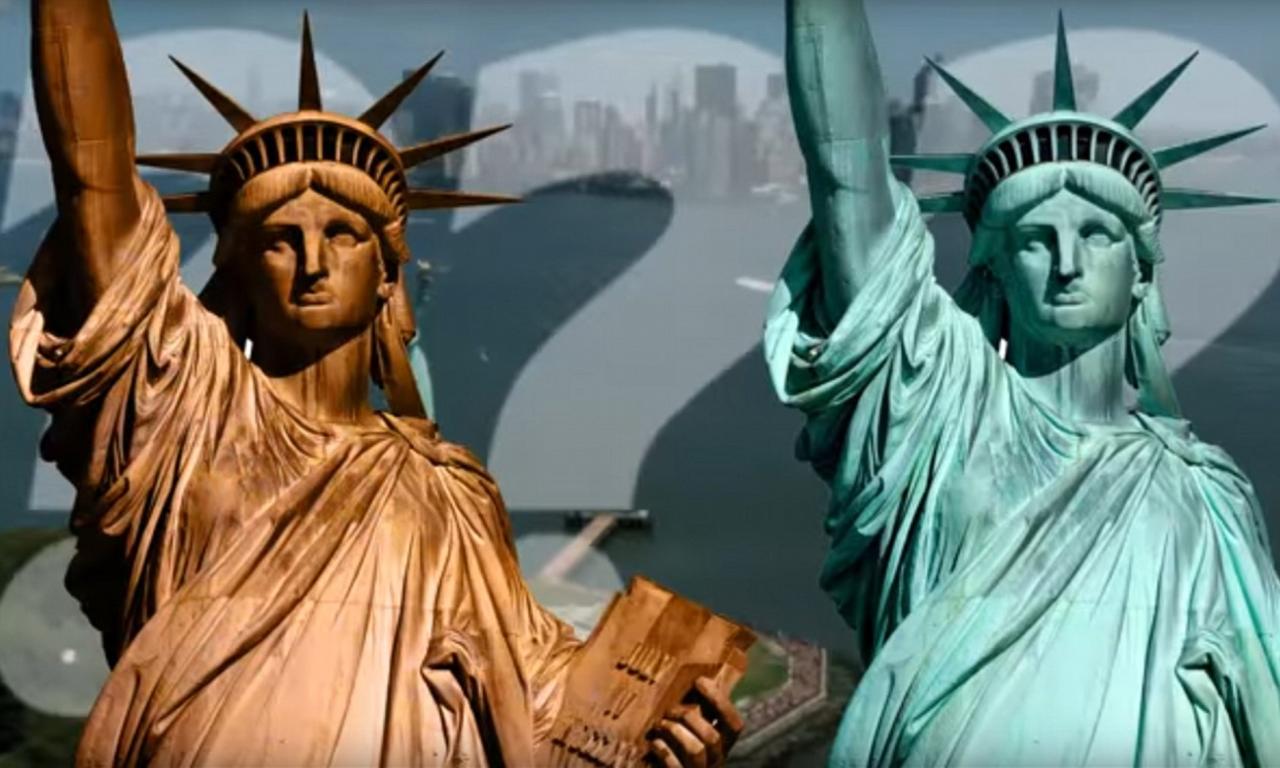“From Copper to Green: The Transatlantic Journey and Transformation of the Statue of Liberty”

The Statue of Liberty, a colossal neoclassical sculpture on Liberty Island in New York Harbor, stands not just as an iconic symbol of freedom and democracy but also as a testament to the enduring bonds between France and the United States. This monumental gift from France to the United States in 1886 has a rich history that spans its conception, construction, transatlantic journey, and the fascinating process of its color transformation over the years.
Origins and Conception
The idea for the Statue of Liberty was born out of the political and social upheavals of the 19th century. In 1865, Édouard René de Laboulaye, a prominent French political thinker, professor, and staunch abolitionist, proposed the idea of a monumental gift from France to the United States to commemorate the perseverance of freedom and democracy in the United States and to honor the friendship between the two nations. The French sculptor Frédéric Auguste Bartholdi was commissioned to design the sculpture, with the vision of creating a symbol that would embody the ideals of liberty and enlightenment.
Design and Construction
Bartholdi’s design for the statue, officially titled “Liberty Enlightening the World,” featured a robed female figure representing Libertas, the Roman goddess of freedom. She holds a torch above her head with her right hand and a tabula ansata, a tablet evoking the law, in her left hand, upon which is inscribed the date of the American Declaration of Independence. A broken chain lies at her feet, symbolizing the end of oppression and tyranny.
The construction of the statue was a monumental task that required innovative techniques and international collaboration. The statue’s metal framework was designed by Gustave Eiffel, the engineer who would later go on to design the Eiffel Tower. The framework was covered with sheets of hand-hammered copper to form the statue’s skin. The construction was completed in France in 1884, after which the statue was disassembled into 350 individual pieces and packed into 214 crates for its journey to the United States.
Journey to America
The transatlantic voyage of the Statue of Liberty in 1885 was a significant undertaking. The statue arrived in New York Harbor aboard the French frigate “Isère” on June 17, 1885. Reassembling the statue on its new pedestal on Liberty Island, then known as Bedloe’s Island, was a complex process that took several months. The statue’s official dedication took place on October 28, 1886, in a ceremony presided over by President Grover Cleveland.

Color Transformation
One of the most intriguing aspects of the Statue of Liberty is the transformation of its color. Originally, the statue was a dull copper color, similar to a penny. However, over the first few decades of its life, the statue underwent a natural weathering process called patination. The copper skin reacted with the air, forming a layer of copper carbonate called verdigris. This reaction is what turned the statue to its characteristic green color, a process that was complete around 1920. This green patina not only gives the statue its unique appearance but also acts as a protective layer, preventing further corrosion of the copper beneath.
Symbolism and Legacy
The Statue of Liberty stands as a powerful symbol of freedom and democracy. It has welcomed millions of immigrants to the United States, standing as a beacon of hope and opportunity. The statue’s enduring legacy is not only in its monumental scale and engineering achievement but also in its representation of the shared ideals and friendship between France and the United States.
In conclusion, the Statue of Liberty’s journey from a conceptual idea in France to its iconic status in the United States is a remarkable story of international collaboration, engineering ingenuity, and the universal aspiration for freedom and democracy. Its transformation in color over the years adds a fascinating chapter to its history, reflecting the natural processes that shape our cultural landmarks. The statue remains a potent symbol of liberty, enlightening not just the United States but the world.



